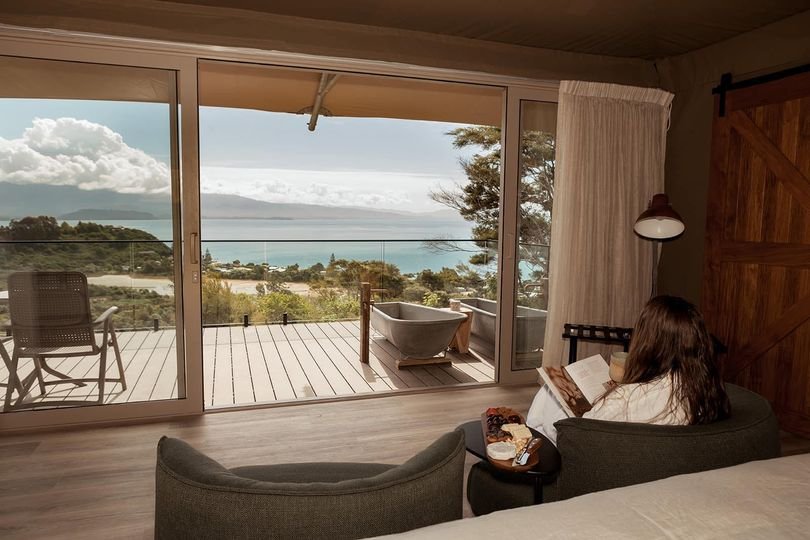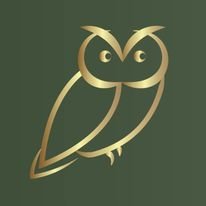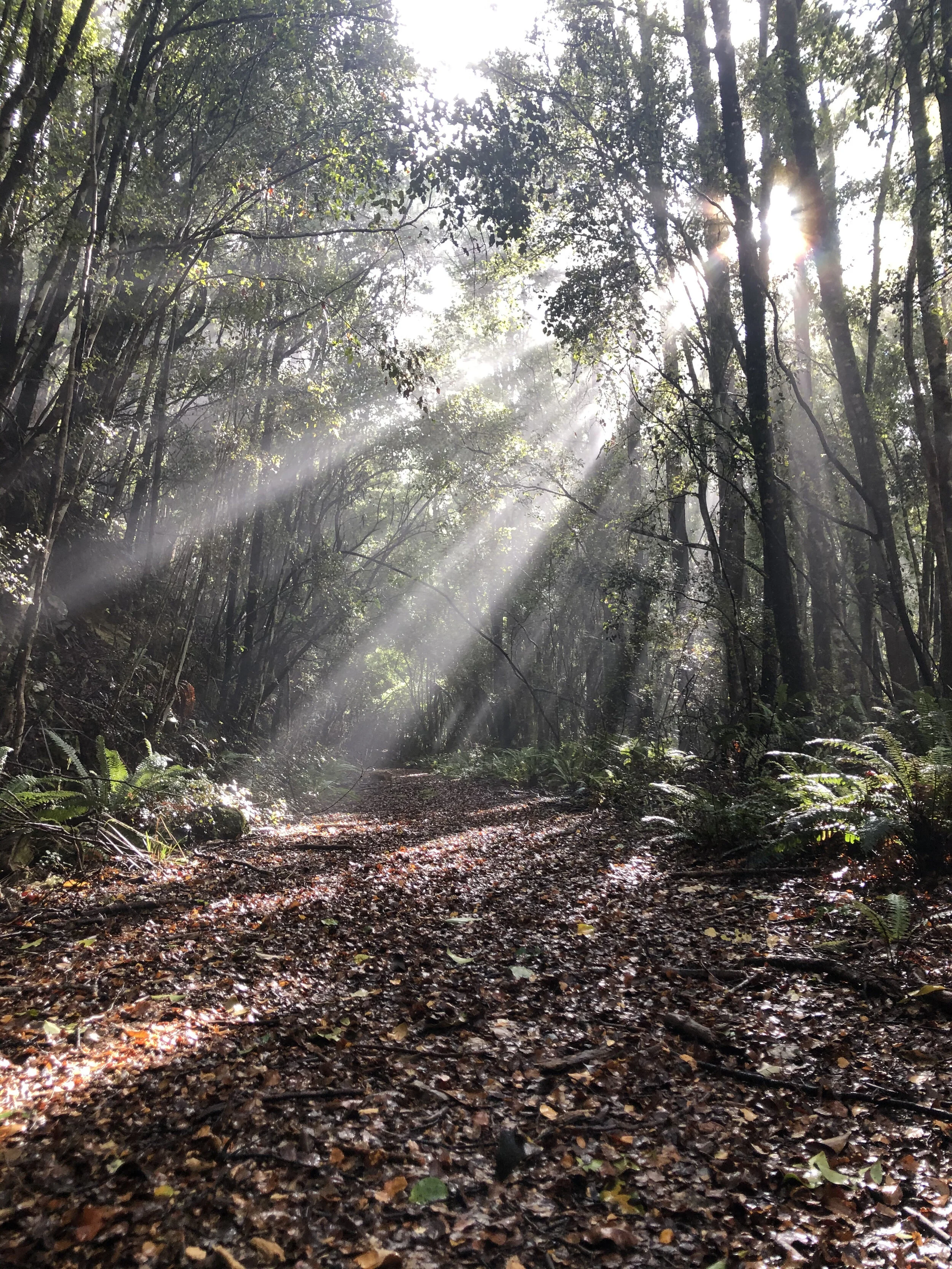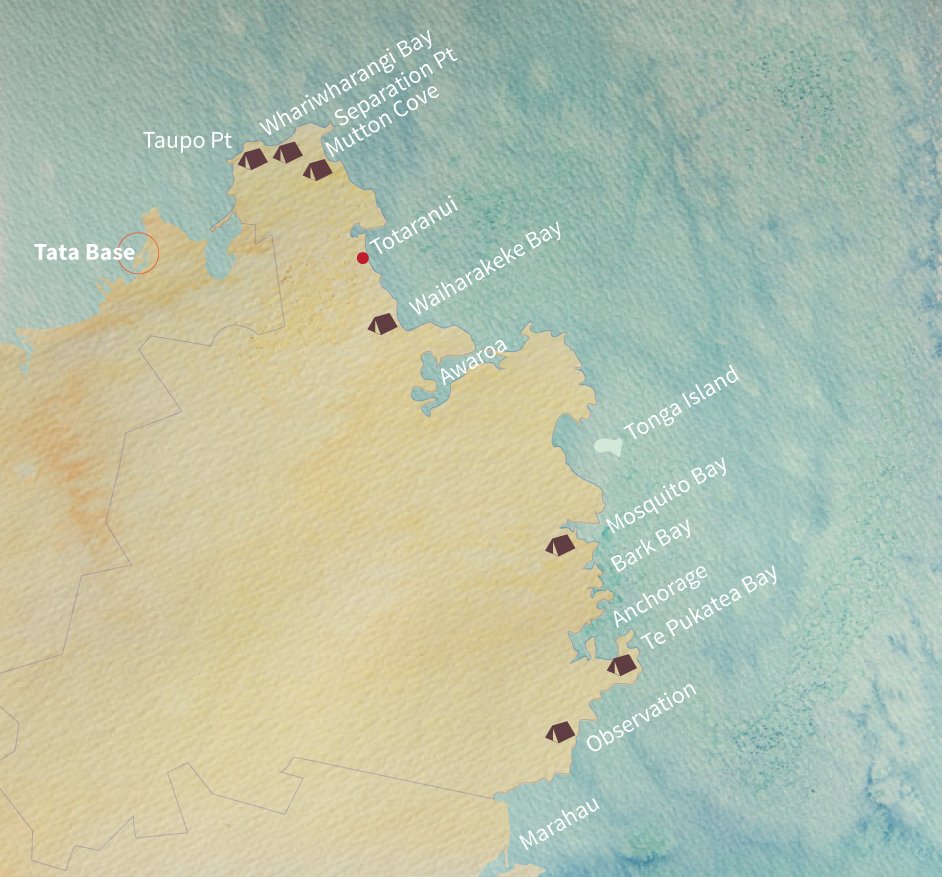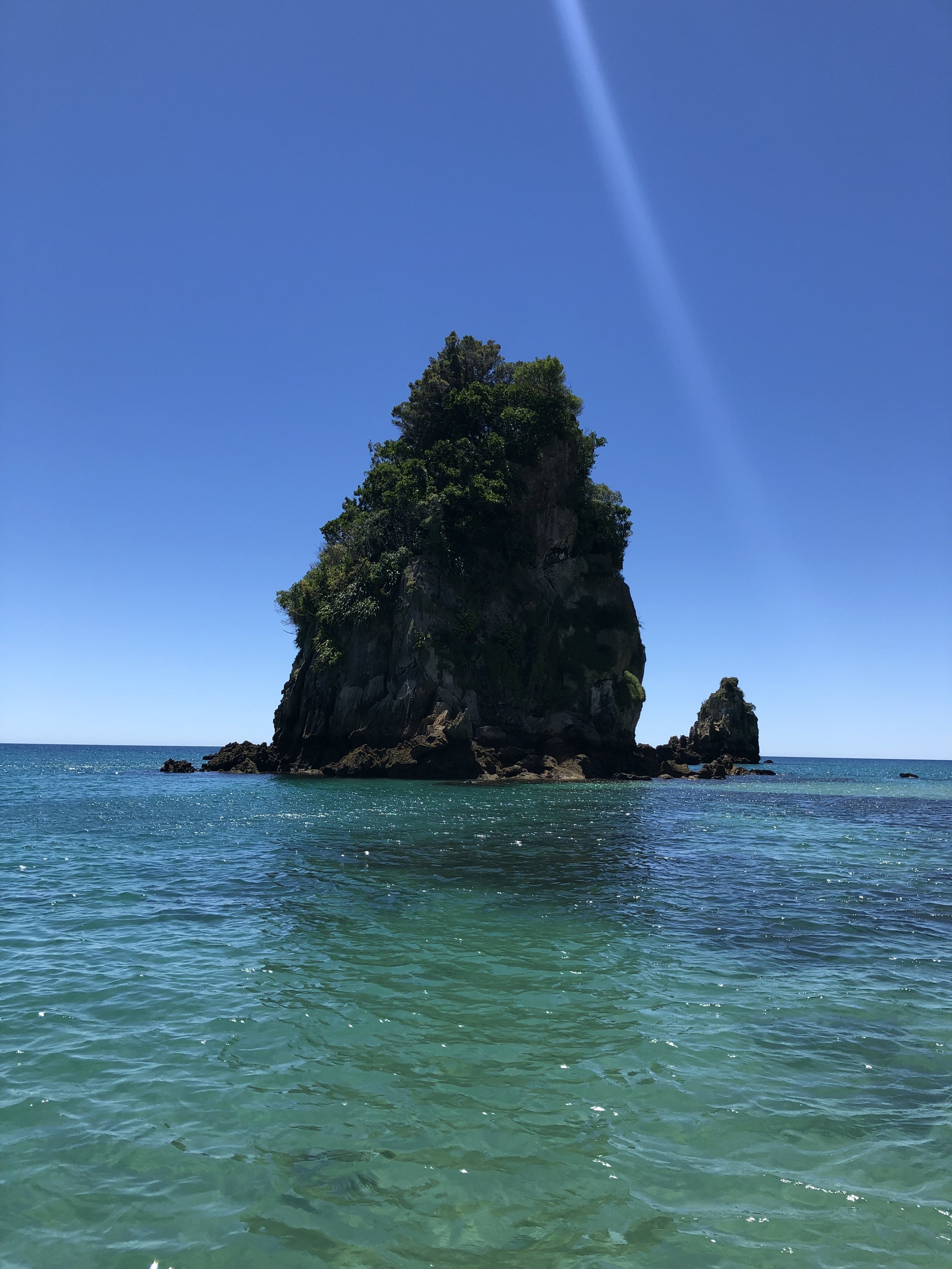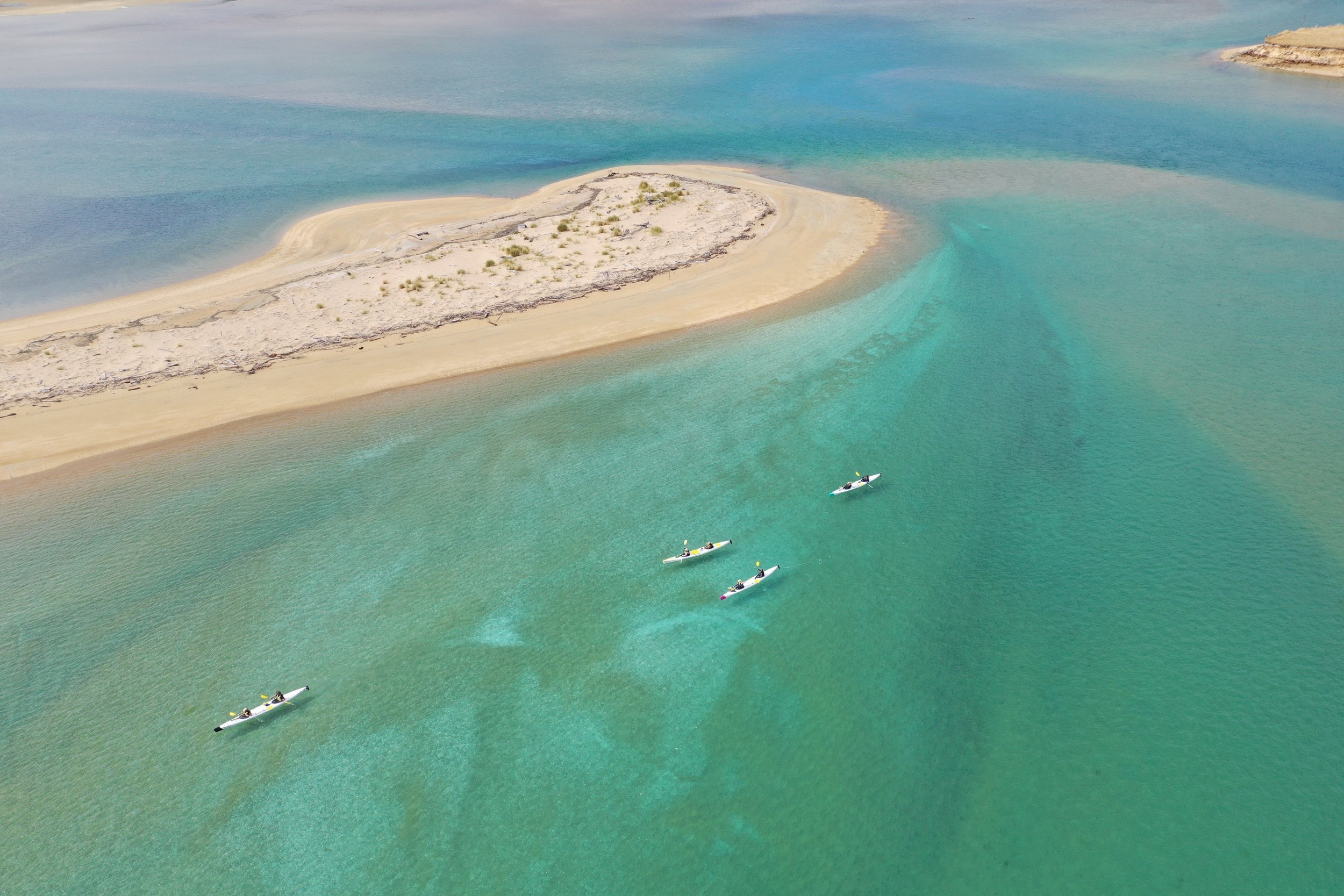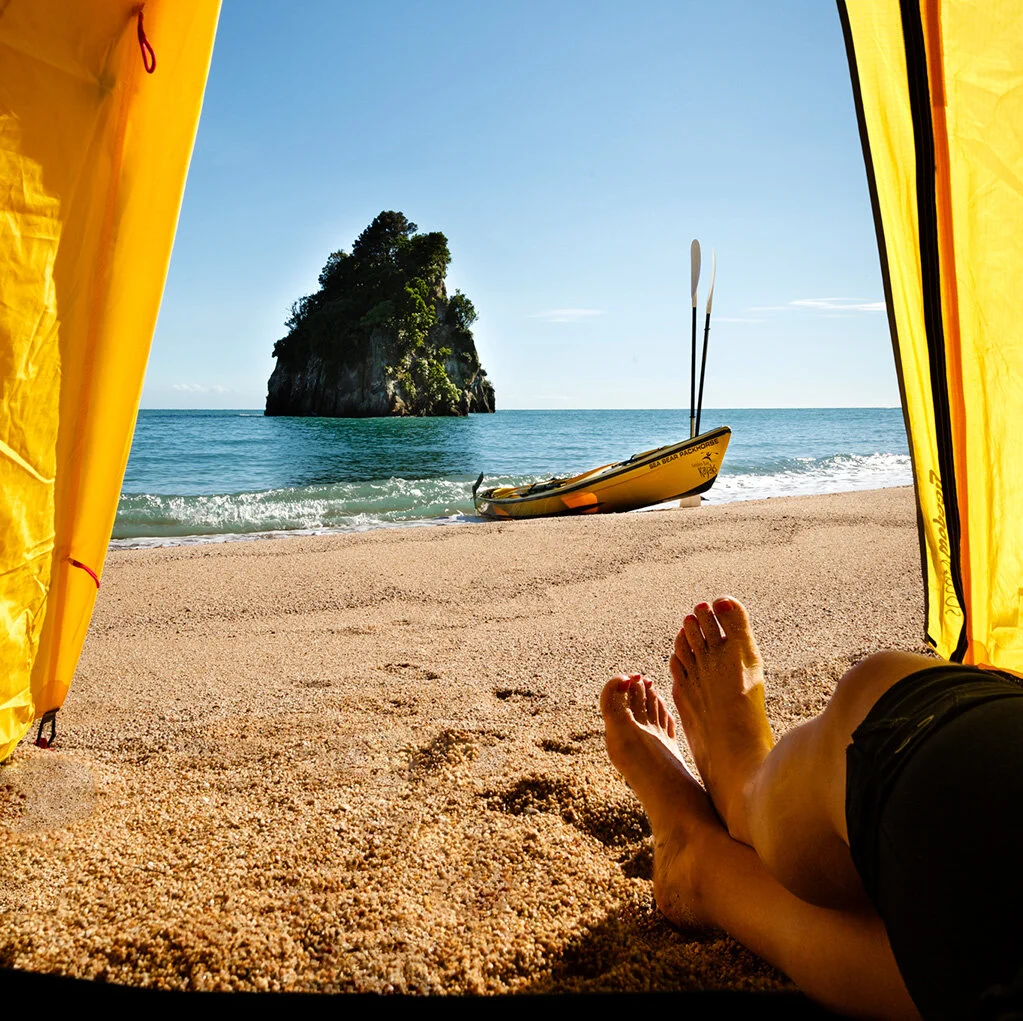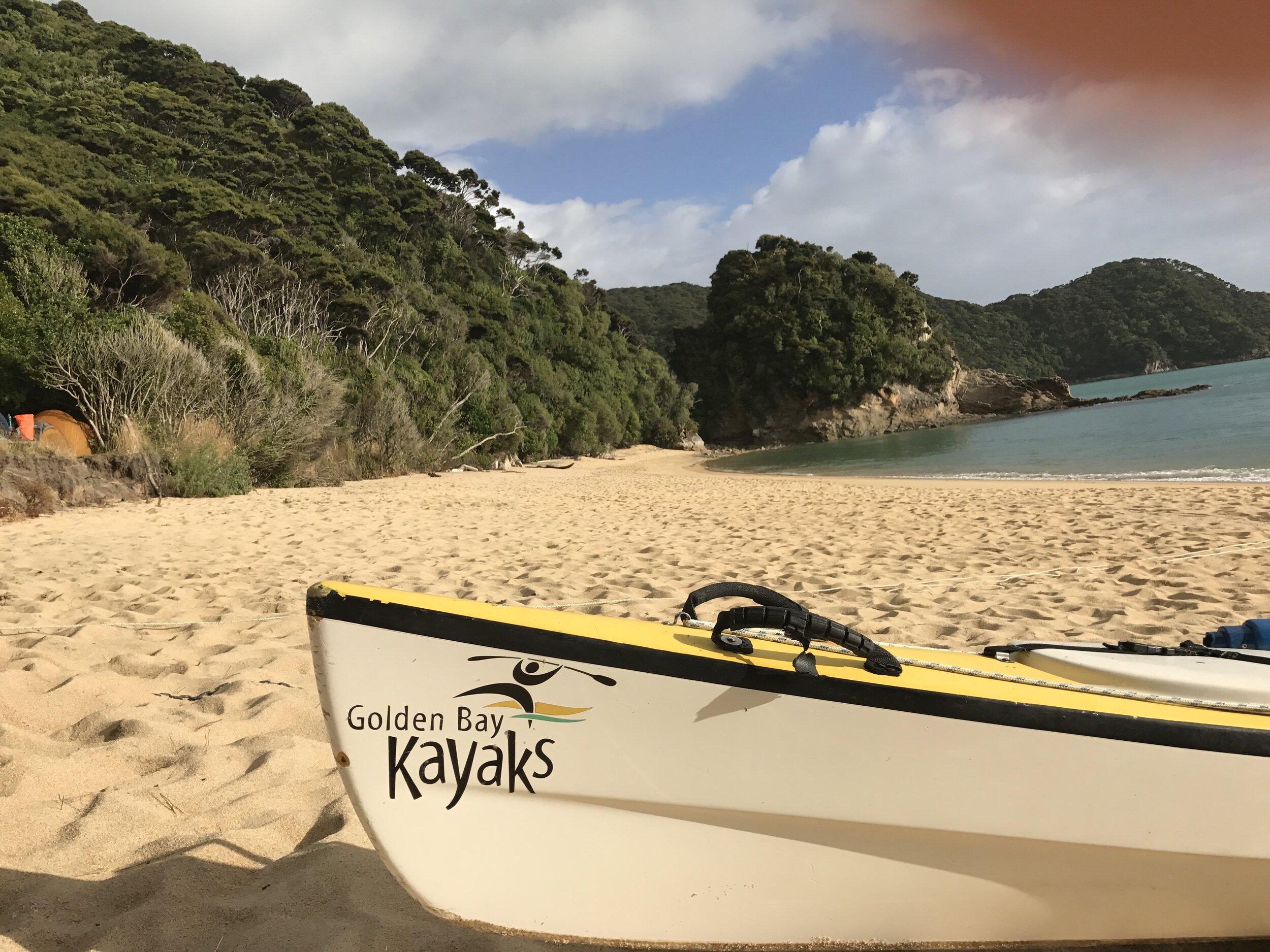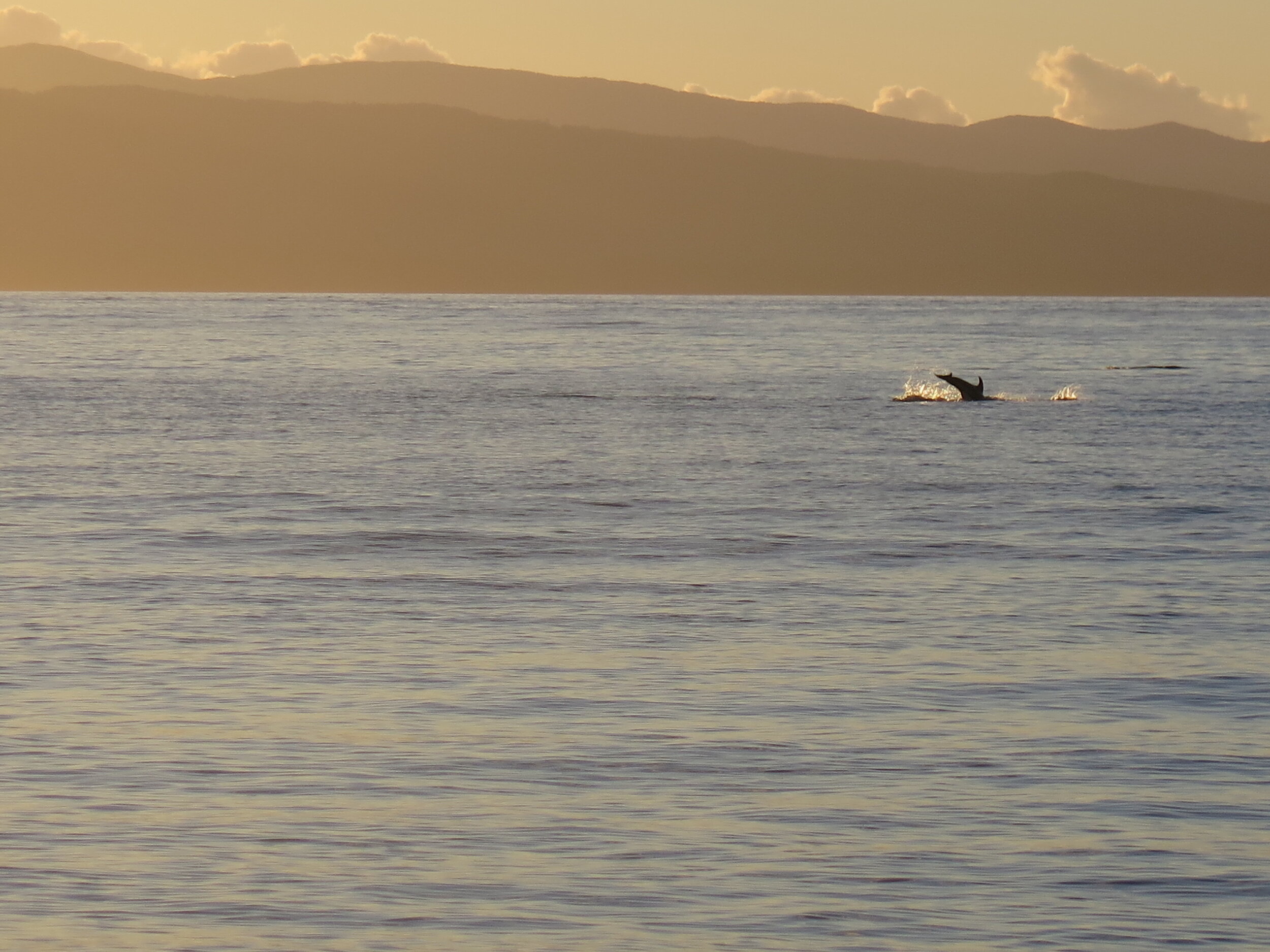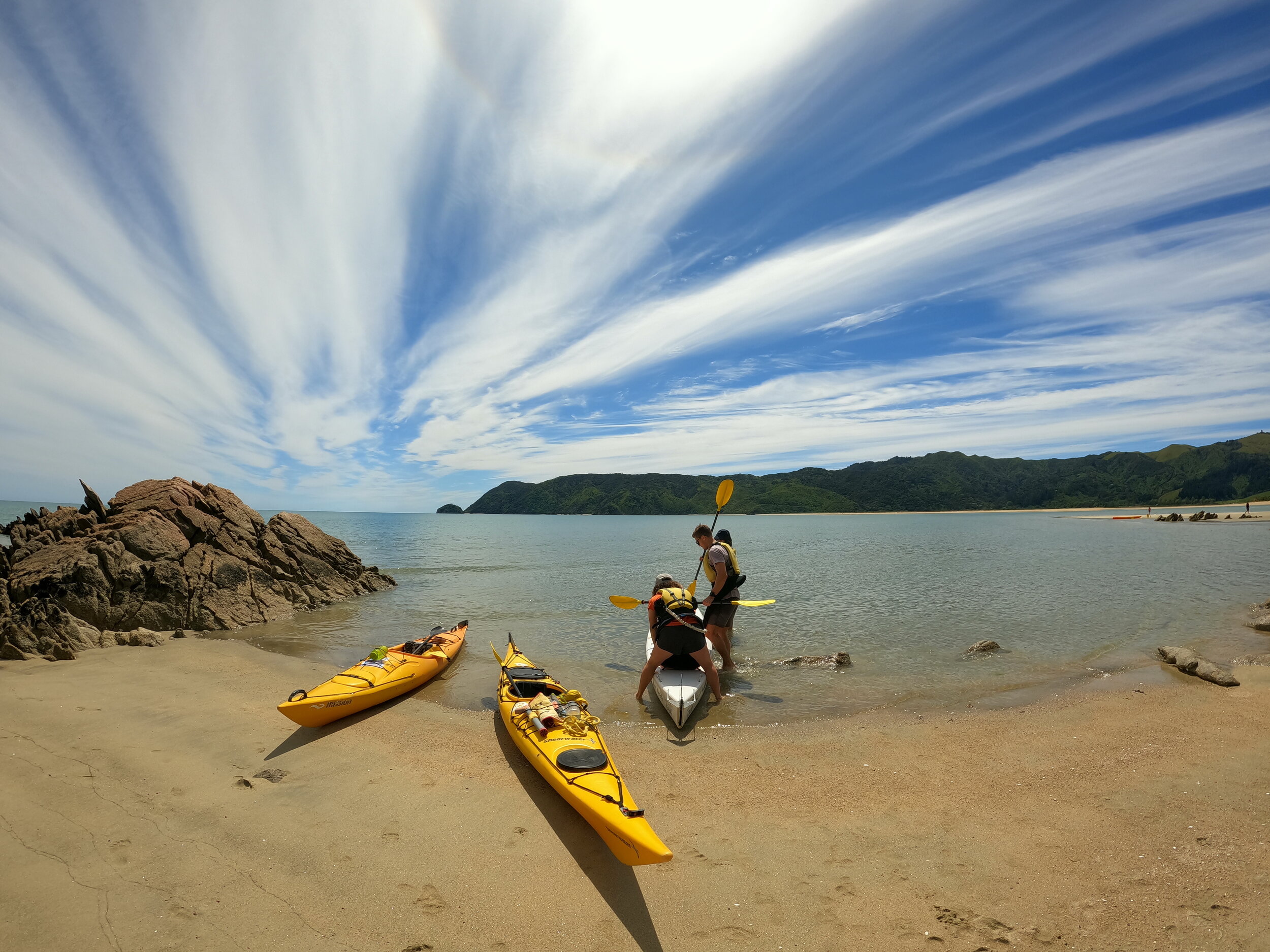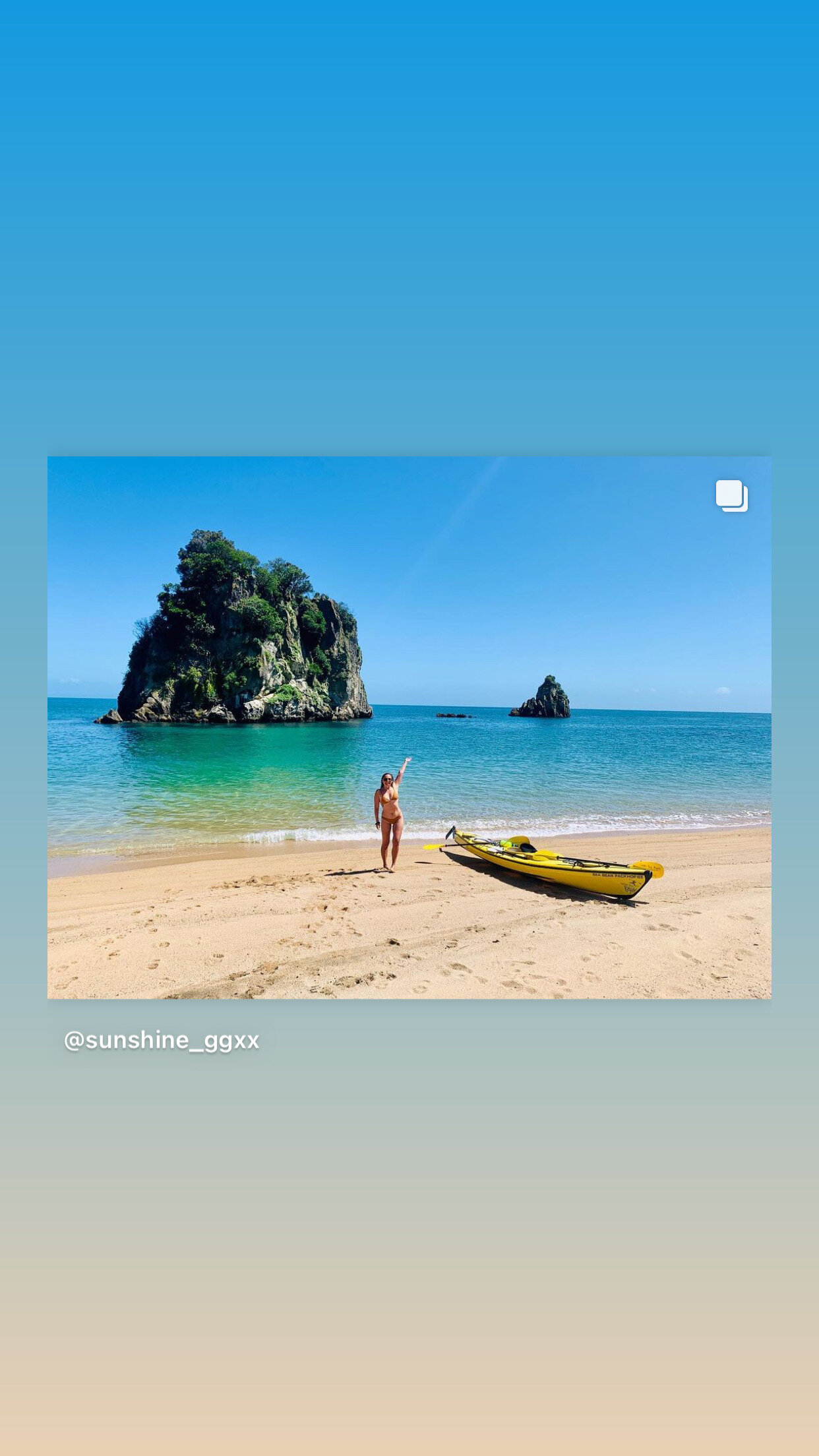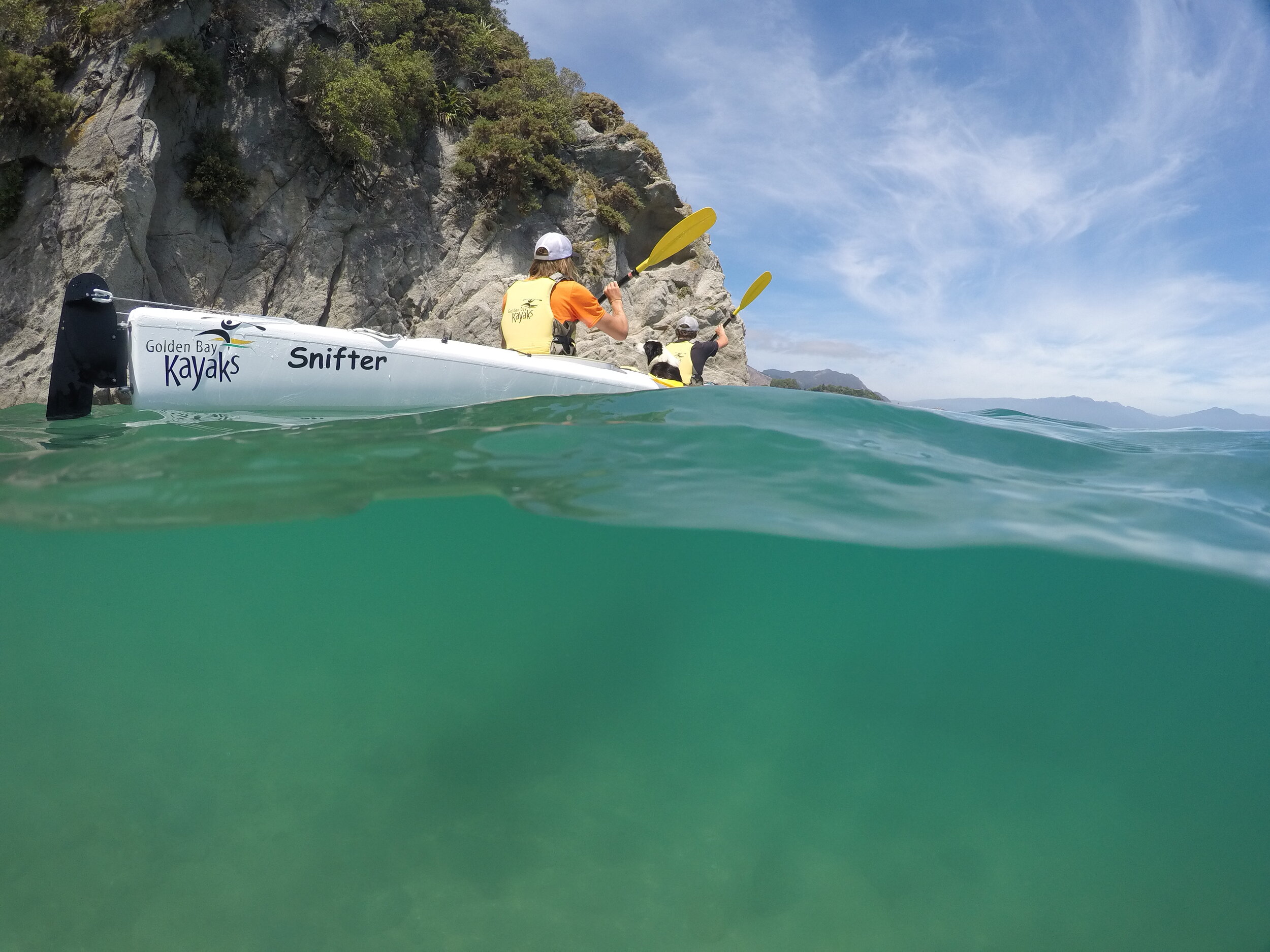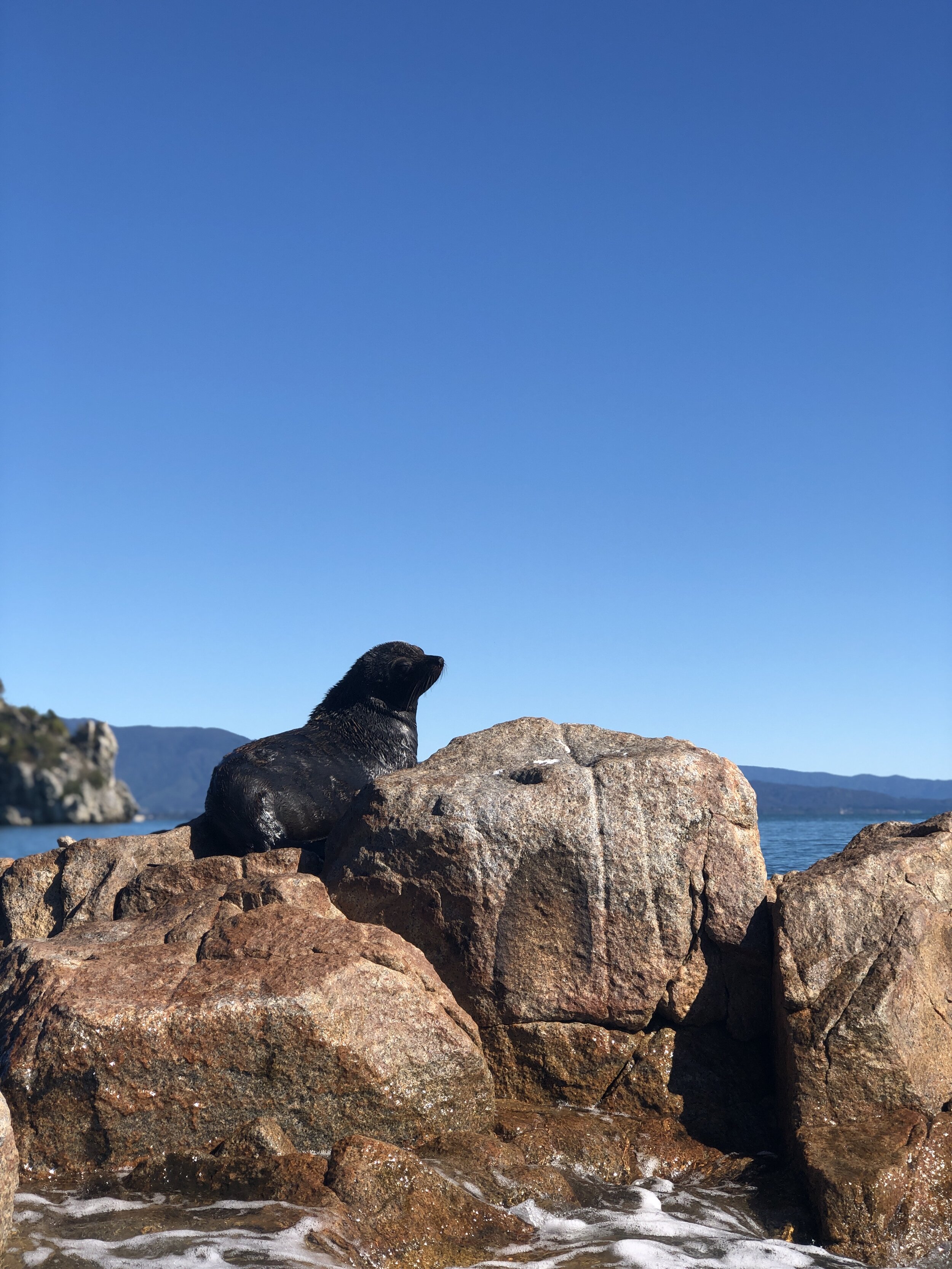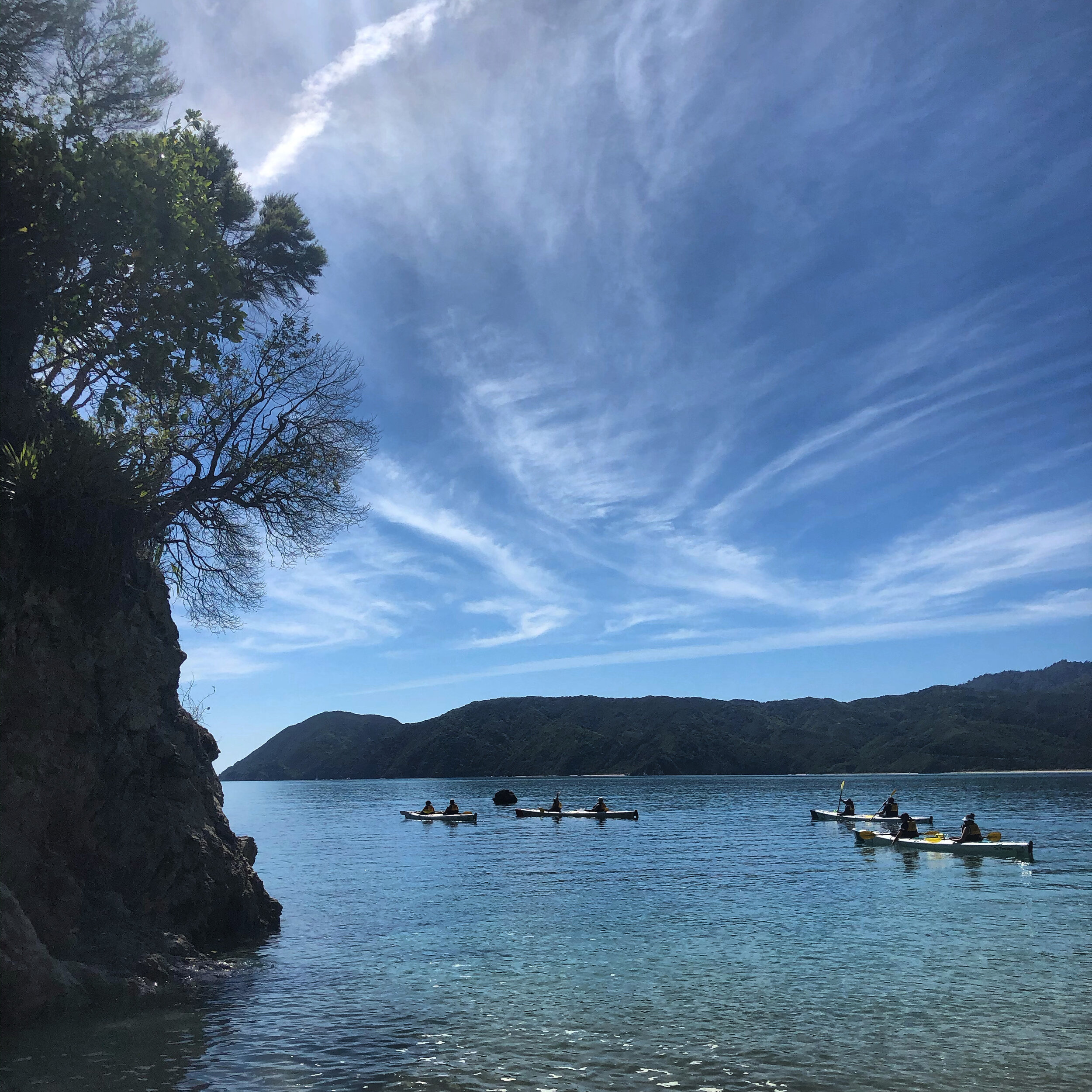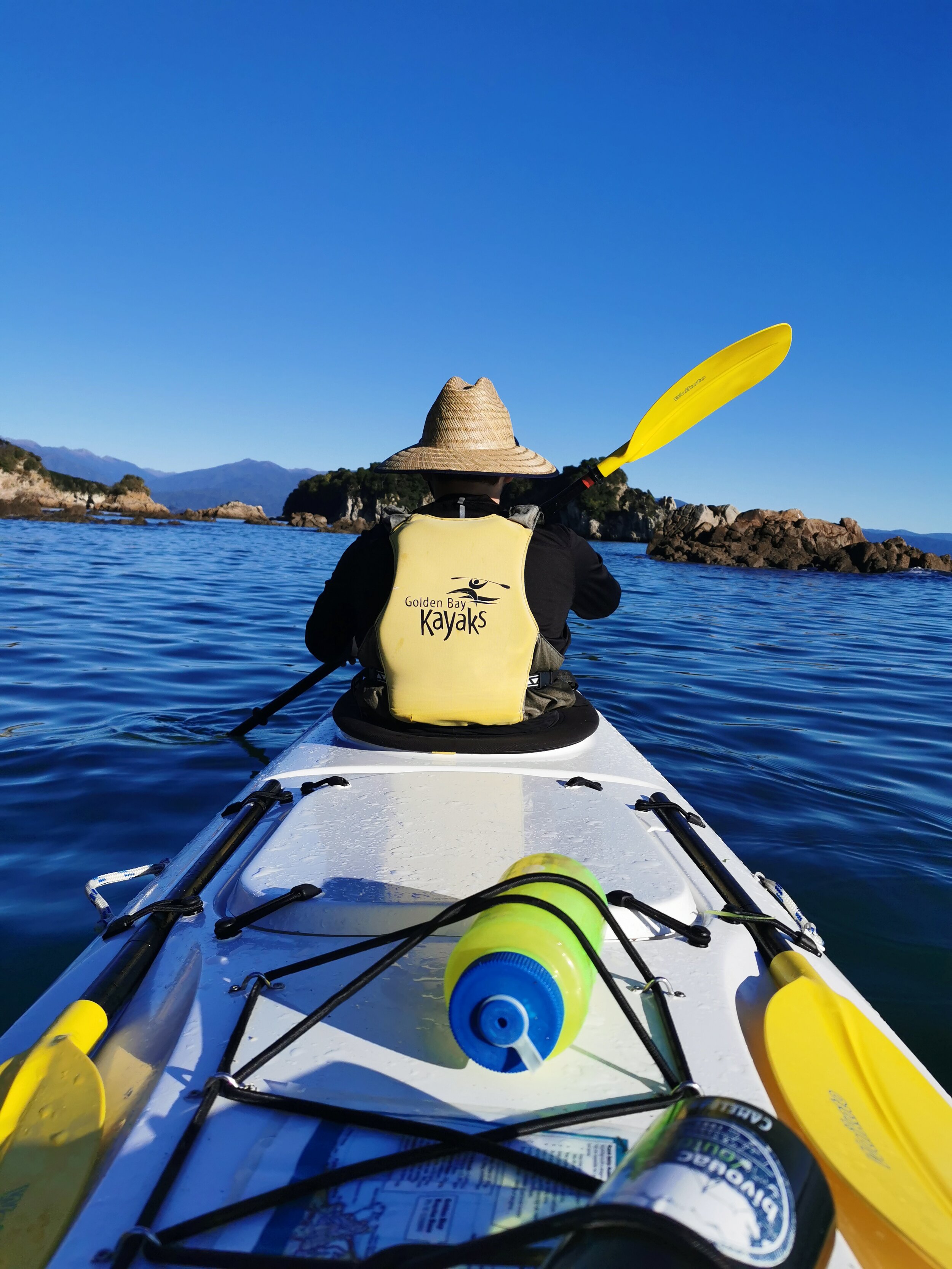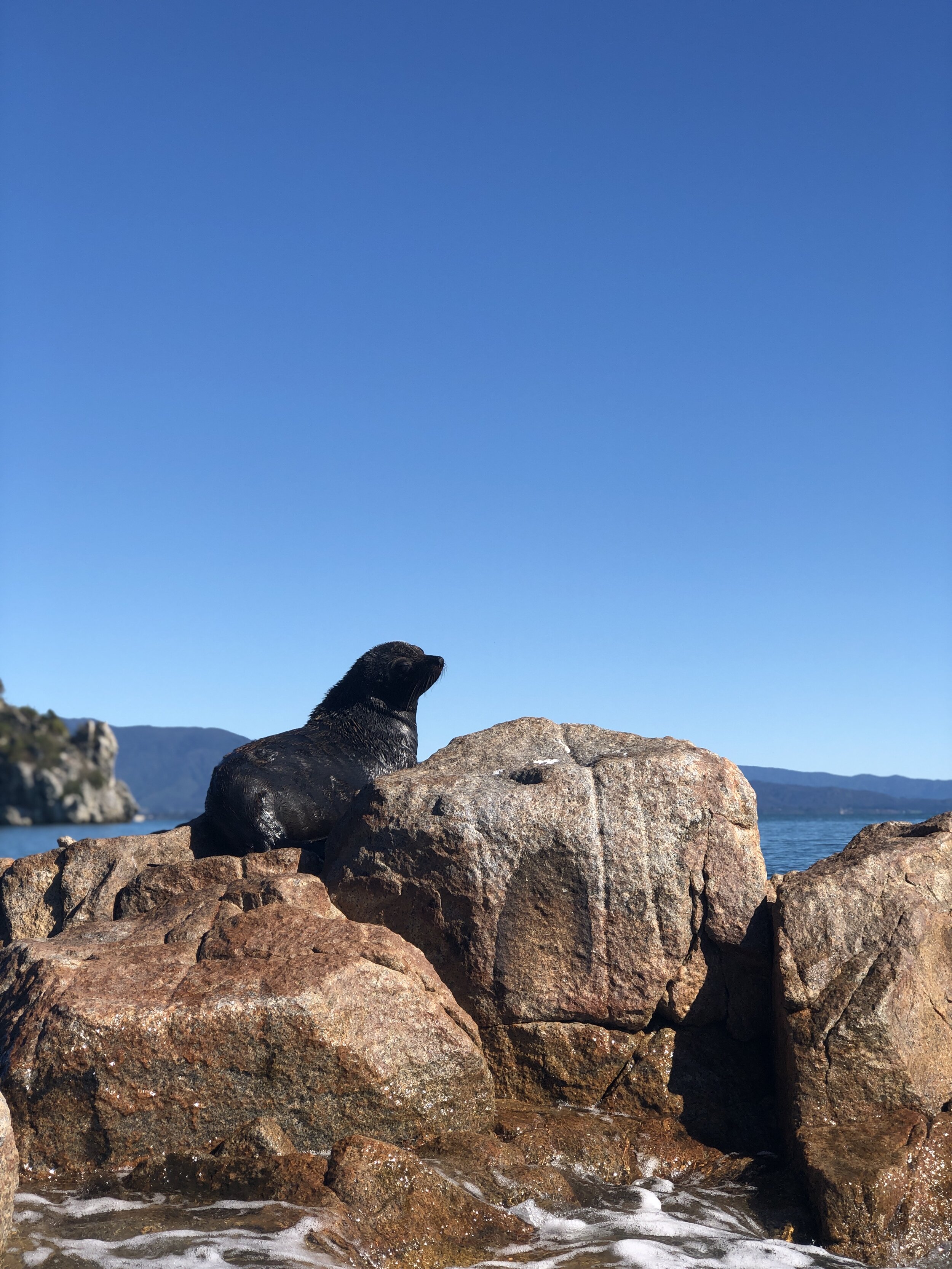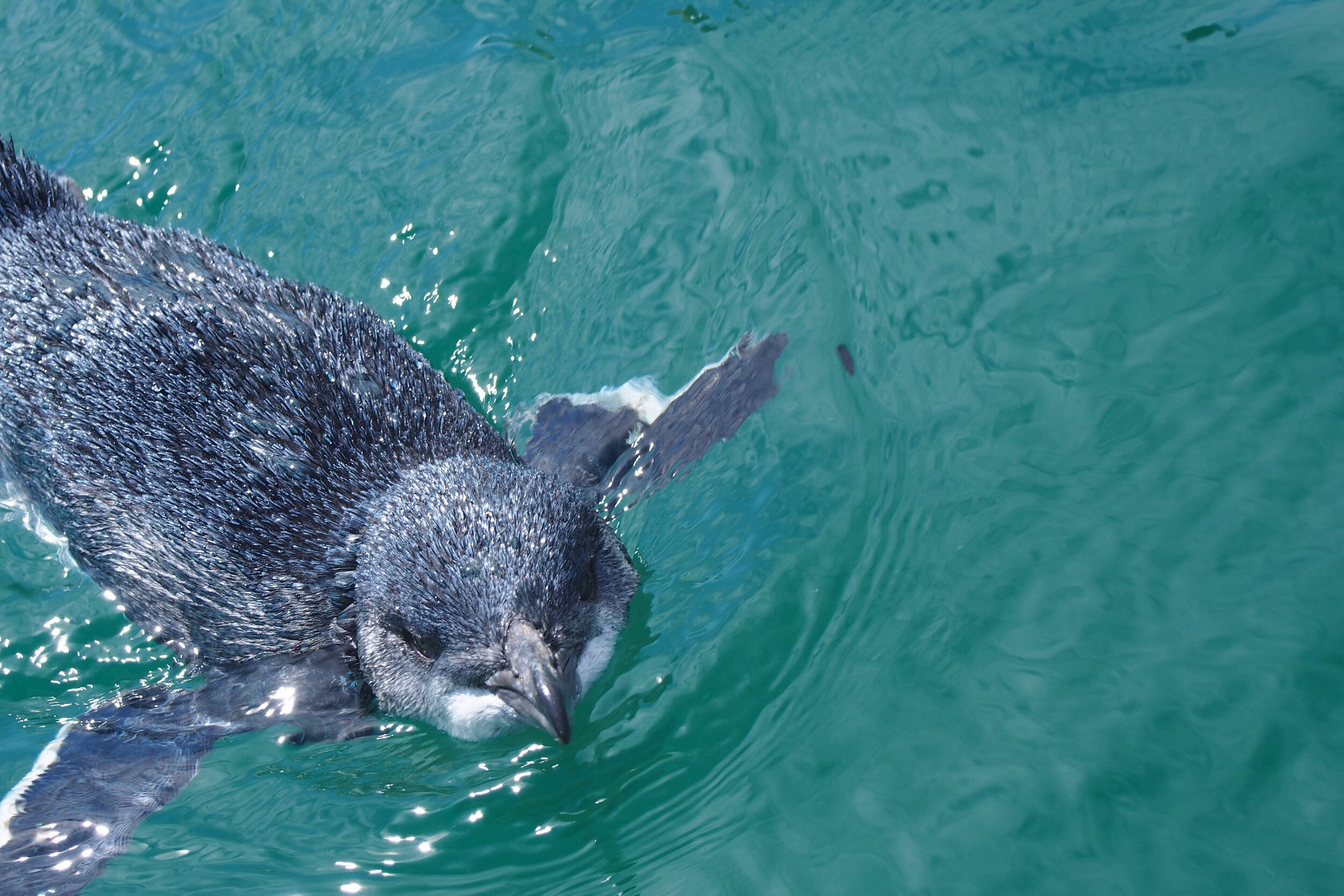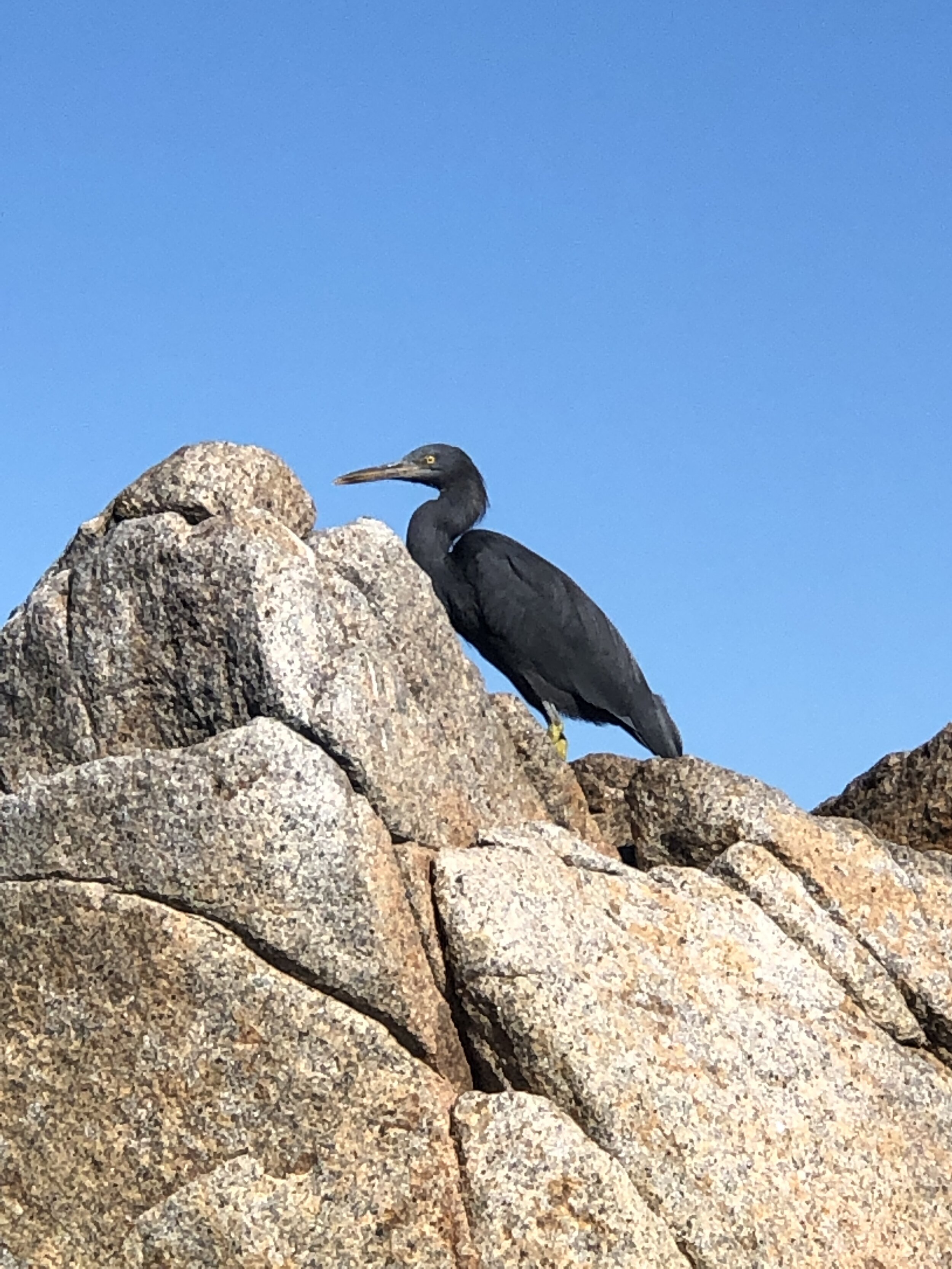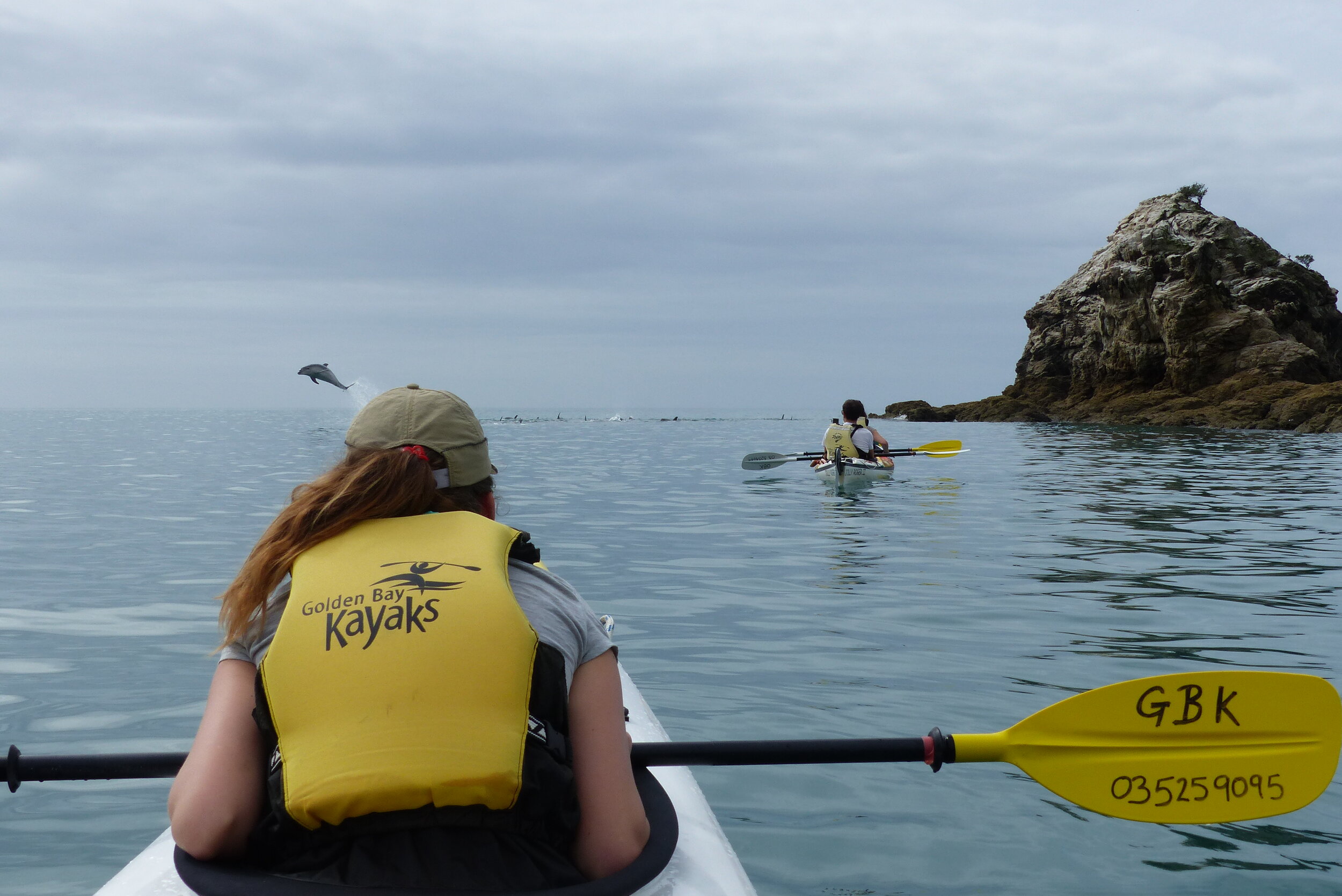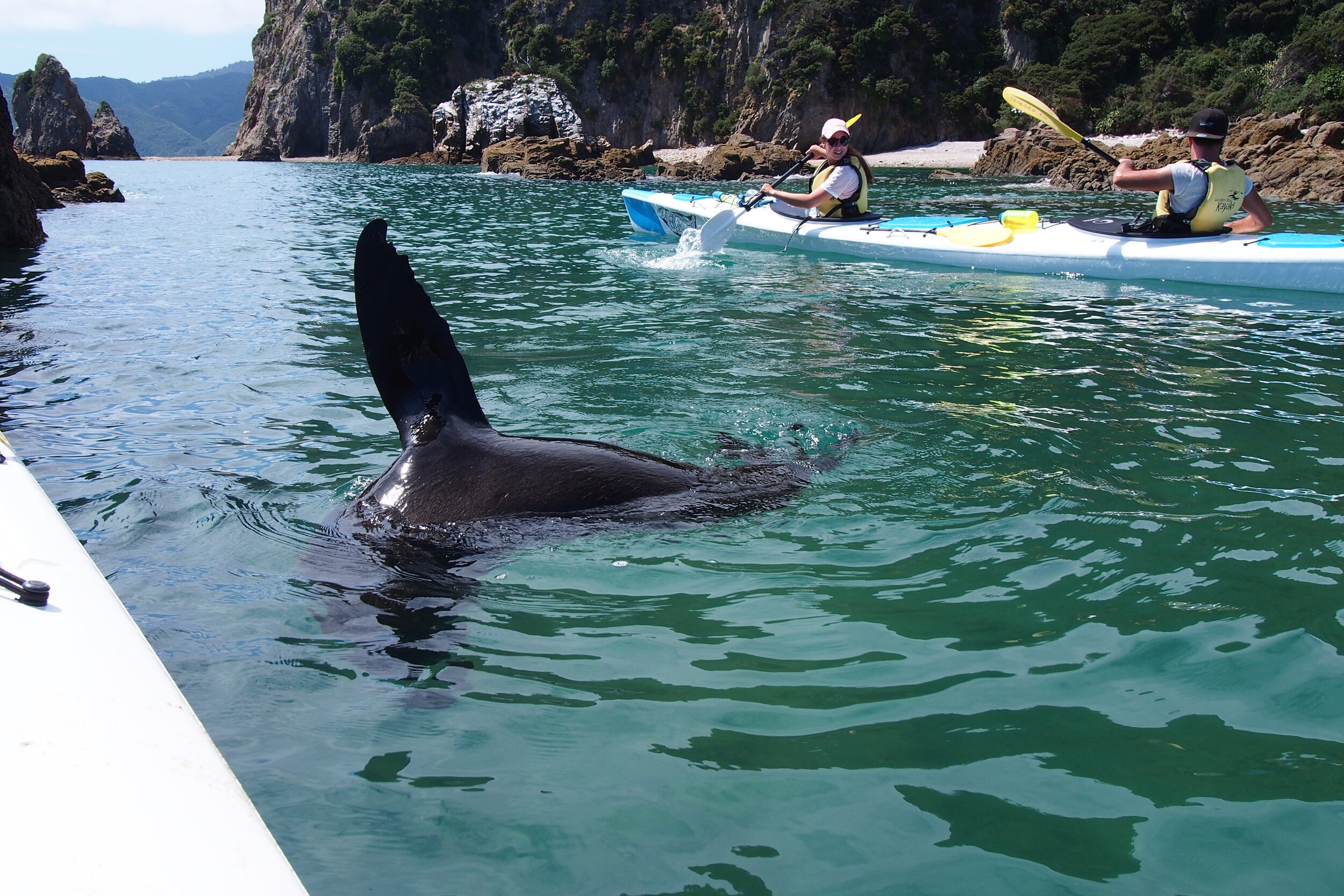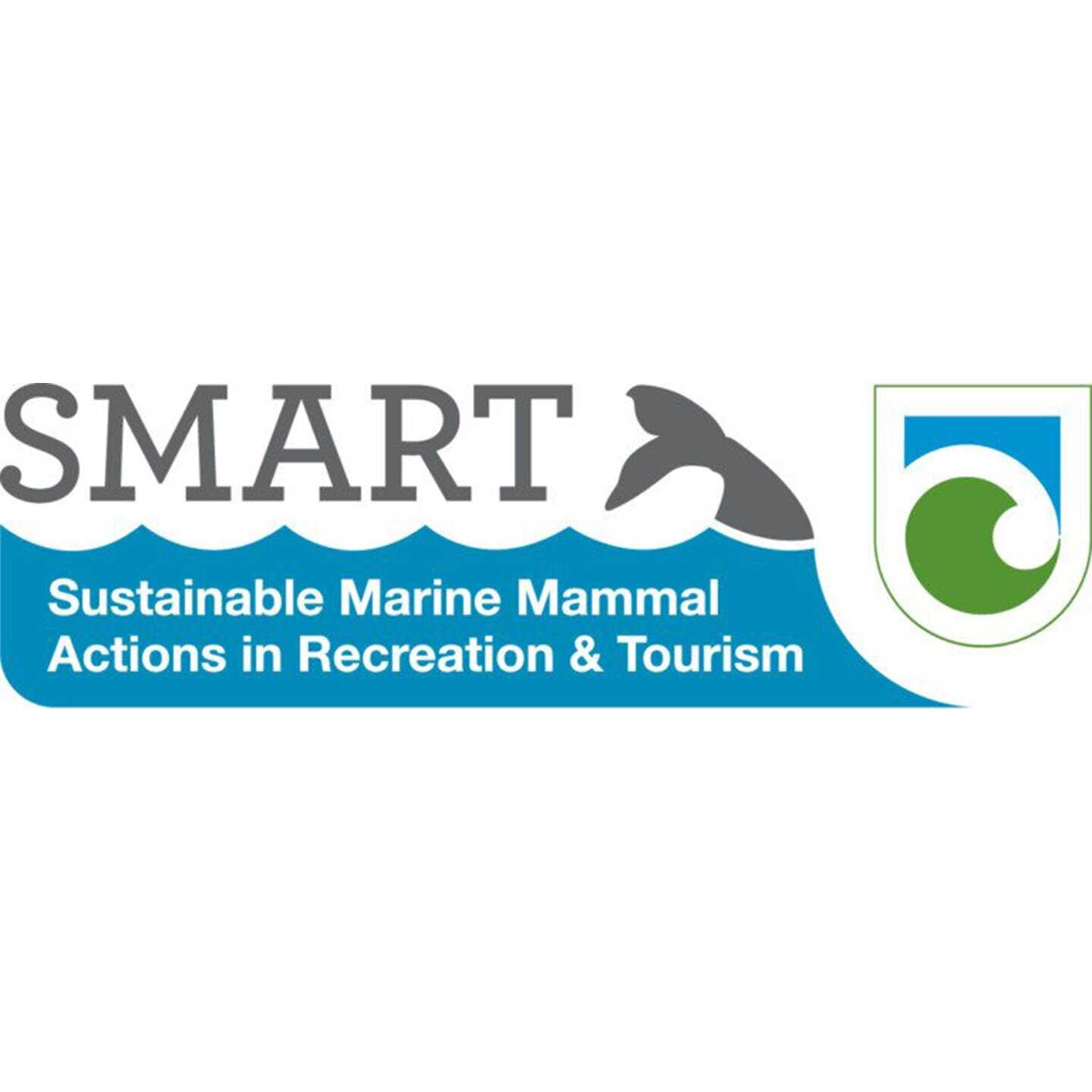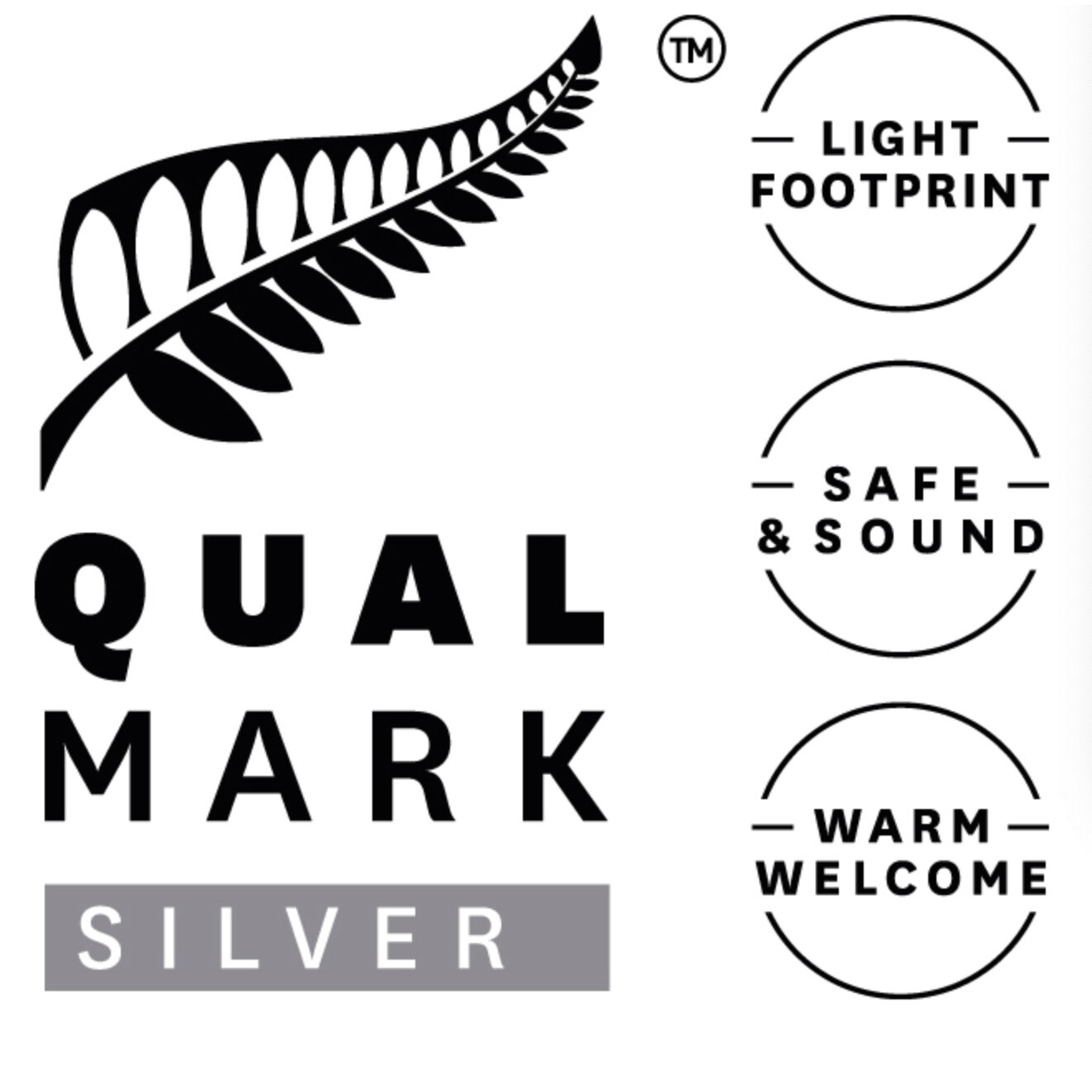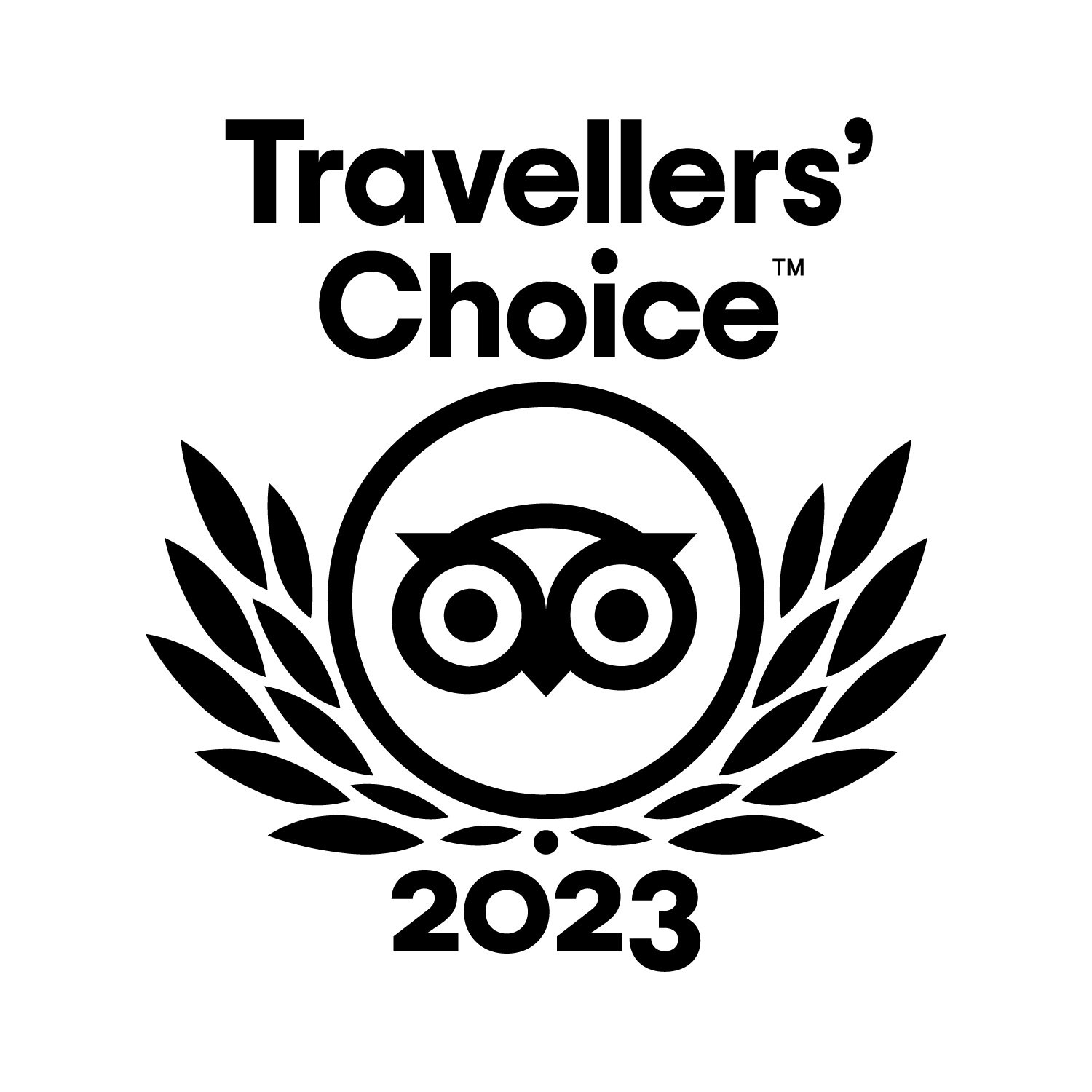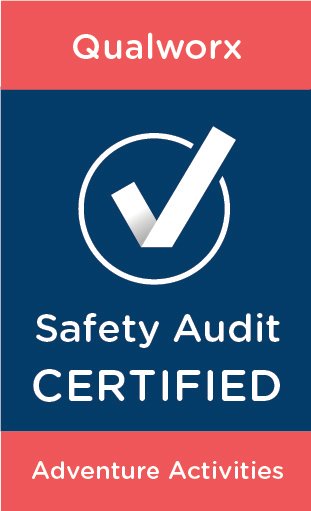Supporting our environment to ensure species survive for future generations to enjoy.
Nurturing Nature: Bespoke Eco-Private Guided Tours with Golden Bay Kayaks
Golden Bay Coastal Luxury Retreat
Looking for an exclusive adventure that immerses you in the natural beauty of New Zealand? Look no further than the Golden Bay Coastal Luxury Retreat, offered by Drift Off Grid and Golden Bay Kayaks.
Experience the rugged coastline of Golden Bay like a true local with a guided kayak tour, where you’ll discover hidden coves, see stunning wildlife, and feel the rush of adventure. After a morning on the water, relax and unwind at Drift off Grid, an eco-retreat nestled in what feels like the heart of wilderness.
Locally owned and operated the retreat is designed to provide the ultimate blend of sustainability and luxury, with private eco tents that have cosy outdoor baths, breathtaking views and superb furnishings.
Luxury is all about creating unforgettable memories, and our Golden Bay Coastal Luxury Retreat package is no exception. As locals, we know the hidden gems and secret spots the will make your retreat truly unforgettable. So why wait? Book your escape today and experience the best that Golden Bay has to offer.
Contact us today info@goldenbaykayaks.co.nz
What on earth do you do in Golden Bay?
A weekend adventure with a Brief Encounter in the Abel Tasman National Park
Starting from Tata Beach, the Northern end of the Abel Tasman National Park and finishing at Totaranui Campground.
A weekend away or maybe a quick trip to experience the best of what the Abel Tasman National Park has to offer, the Abel Tasman Brief Encounter is perfect.
Starting your adventure from Tata Beach, Golden Bay. The beautiful Tata Islands is the backdrop as you pack your kayak. Ecologically the most important islands in the Abel Tasman National Park and are home to some our nationally rare and endangered species.
There are a number of places to stay on the way….Wharawharangi is the first of the official campsites in the Northern end of the Abel Tasman. There is a homestead which was built around 1896 by Handcock family and was renovated in the 1980’s. There is also camping available here too.
A short paddle around Separation point is Mutton Cove. At this stunning campsite, evidence of what was once a small farm still exists, the old homestead that once stood here and the old man pines which are testament to our pioneer families that lived here.
Camping under the native Kanuka trees is Anapai bay. A blanket of virgin native bush wraps itself around Anapai, a magical place that holds a lot of history and one of the few places in the Abel Tasman where you can experience the bush before as it has been for many hundreds of years.
The brief encounter with the Abel Tasman National Park ends at the Tōtaranui campground and this is where we come to pick you and your sea kayak up. If you are wanting a true experience of the Northern end of the Abel Tasman National Park, we can bring your hiking gear over and you can walk back to the Wainui Carpark.
Family Friendly, Don't Miss Experiences In Golden Bay.
Sea Kayaking the entire length of the Abel Tasman National Park
[sea kayaking the length of the Abel Tasman National Park]
Exploring Motu Island. Tata Islands, Abel Tasman National Park.
One of New Zealand’s most iconic adventures is sea kayaking the length of the Abel Tasman National Park, starting from the beautiful Tata Beach and finishing at the southern end of the park at the small coastal village of Marahau.
Abel Tasman is New Zealand's smallest national park, to kayak the entire length takes around 11-13 hours paddle time in a sea kayak. With the many bays, estuaries and beaches to explore a minimum of 2 nights and 3 days is what you should spend, of course the journey deserves as much time as you can give it.
This sea kayaking trip is suitable for those with kayaking and outdoor experience. You will need a good understanding of weather conditions, be physically fit and be able to look after yourself in the great outdoors. Always check the marine weather forecast before you head out. NZ Metservice Marine
When Sea kayaking all of the coastline around the Abel Tasman National Park, expect hazards such as weather changes, waves, wind and rocks. And from Totaranui to Marahau, the biggest hazard on your journey is the water taxi’s of which there are many, travelling fast and travelling close…
Getting to Tata Beach… a few options:
Golden Bay Air: They are flights into the Takaka Aerodrome from Wellington and Nelson. They run a shuttle service as well.
Destination Tasman: Chrissy and her team can pick you up from your accomodation in Nelson and pick you up. They are also able to pick you up from Marahau. Contact us for more details.
Drive over the hill. From Nelson it is around a 2hr drive. Once in Takaka we have a great selection of cafes, supermarkets.
Here is a list of some of the campgrounds that we enjoy, the distances are approximate. Remember to purchase your campsite or hut passes before you leave from the Department of Conservation website https://bookings.doc.govt.nz/Web/
Taupo Point, Abel Tasman National Park
Tata Beach to Mutton Cove. 12km.
Mutton Cove is one of our favourite campsites, it is where you watch the full moon come up, the early morning sunrise and the baby seals from the nearby nursery playing in the waves, all while laying in you tent!
On the way to Mutton Cove, a great morning tea spot is Taupo Point, is the site of the most important Pa on the eastern side of Mohua, once occupied by the iwi Ngāti Tumatakokiri, it is one of the most beautiful beaches in the park . In 1642 Abel Janzoon Tasman sailed into Golden Bay, the meeting didn't go well with Ngāti Tumatakokori, resulting in the loss of life and the Dutch sailor naming the bay Murders Bay. Taupo Point is where NZ’s oldest maritime archaeological site is found, a waka boat ramp which is located on the southern side of the point and can be seen at low tide.
Wharawharangi is an old farm. The historic homestead has been converted into a DOC hut and there is also camping available here. Surrounded by old Macrocapa Trees, cattle yards and farming relics from the past, it is an interesting, beautiful place to explore.
Separation Point/Te matau is the headland that separates the waters of Tasman and Golden Bay. However this is not where its name originates, after a few attempts of the Gwondwana plate separation, this is where New Zealand and Australia finally departed ways, giving up the snakes and keeping the kiwi’s!
Separation Point is the first headland/crux of the trip. It is a useful headland if you have a westerly chasing behind you for protection. (There are 3 headlands/cruxes in this trip. Separation Point, Awaroa Heads and Pitt head, all need to be treated with caution).
The dramatic coastline from Tata Beach to Mutton Cove is one of the best sea kayak destinations in NZ, the large granitic cliffs, healthy seal colonies, clear water, it is a place wonderment.
Getting ready at Mutton Cove, Abel Tasman National Park.
Mutton Cove to Awaroa. 9km.
Kayaking passed rocky outcrops and beautiful beaches, as you round the headland into Tōtaranui, you will kayak under towering giants of the last remaining virgin bush in the park, called the Tōtaranui bush block. These are the trees that drove Perrine Moncrieff and her associates to push for the creation of the national park.
The Tōtaranui Campground is the largest in the park and is popular in the summer, it has 269 campsites.
Waiharakeke is situated at the head of the Awaroa Inlet. It is the perfect spot to camp if you are wanting to tackle the Awaroa Headland early the next morning. This is a lovely little white sand beach with a campsite tucked away in the trees.
The Abel Tasman has many private settlements, Awaroa is one of these. There is around 50 baches, accomodation and a restuarant. It is historically an important area
Awaroa Hut and Campground is a very tidal option, so work out the tides before you book your campsite here.
Metservice Tides. For the Abel Tasman Tides use Tarakohe
If you are looking for another option to camping check these out:
Awaroa Lodge: 11 Awaroa Bay, Awaroa. 4 star hotel accomodation and a restaurant
Awaroa Glamping: 53 Awaroa Bay, Awaroa. A premier glamping location.
Awaroa to Mosquito Bay. 13km.
Give yourself plenty of time to explore this 8km long headland(check the weather before you take your time). This ever changing coastline, a highlight for many is Shag Harbour, this is a hide out for seal pups to play!
The Tonga Marine Reserve is in the heart of the park. The coastline around Tonga Island is nice to explore, with little coves for seal nurseries and clear blue water.
The Mosquito Campground experienced a lot of damage during Cyclone Fehi in 2018. The inlet is guarded by a little island, a charming place to camp and explore. It is a fabulous place for the kids, a great area for playing cricket or digging holes when the tide is out!
Seal pups @Shag Harbour. Abel Tasman National Park
Mosquito Bay to Te Pukatea.10km
The charm of the Abel Tasman continues. This stretch of the trip has so many charming places to explore, the tranquility of the Falls River, Sandfly bay and a lot of beaches to explore. Or maybe you would like to stretch your legs and hips, go explore Cleopatras Pool.
Te Pukatea is a small campsite of 7, a golden beach that is drenched in sunshine late in the day makes it one of the warmer campsites in the southern end.
Te Pukatea to Marahau. 10km
The final stretch and the last crux of the trip is Pitt Head and into the infamous mad mile. On certain weather forecasts this can be very rowdy with rocky headlands, tide and waves.
The highlight is Adele Island. The Birdsong Trust is a charitable trust that started in 2007, ‘to once again fill our forest and beaches with birdsong’. With the support of the Department of Conservation and Project Janszoon and a mammoth effort by volunteers, it is encouraging to see the results. It is worth pulling the boat up and exploring the walking track on the island and experiencing how New Zealand could sound without the predators.
Useful websites:
Project Janzoon: Project Janszoon is a philanthropic trust on a mission to restore and preserve the Abel Tasman’s rich wildlife for all to enjoy. It is a team effort involving conservationists, iwi, locals, scientists and tourism operators. Their interactive website with cameras, information and history is worth exploring.
Metservice Marine Is the choice of weather websites to use, use Abel Tasman.
Department of Conservation: Click here to book your hut or campsites.
Richie's McCaw's Top Spot
Nature Watchers' Paradise
We are lead to believe that the Abel Tasman National Park starts in Marahau and finishes at Totaranui. The truth is that this is where the sea taxis stop to unload their last passenger, the rest of the park is kept untouched by commercialisation.
From Totaranui north towards Tata Islands is a plethora of wildlife, rock formations and plant species. A landscape rich in history and stories of our country. Separation Point or Matau which means ‘hook’, referring to a fish-hook which is an important boundary marker for Ngati Tama and Ngati Awa. It is also an important breeding area for the Kekono (NZ fur seal) with a growing population spreading along the coast line towards Tata Beach. The bull seals that are on their own live year round at Abel Tasman Point, which is adjacent to Motu Island (Tata).
Tata Islands are included in the Abel Tasman National Park. The islands are part of 3 areas of young limestone deposits within the park, the limestone is fertile compared to the golden granitic beaches that lie across from them.
The Spotted Shag Colony is the largest in NZ, with a population in the thousands, every morning they meet on Tata Beach near the boat ramp to meet and deliver a small pile of stones that are spat out into a little heap. It is thought that the stones are to help with the parasites in the gut or are maybe used for ballast.
The islands are home to the nationally endangered Reef Heron. With only a few hundred of these birds in NZ, we are lucky to be watching our population slowly grow to around 4-6 breeding pairs. They are a solitary bird, very shy and like to nest in little dark spaces on the island. They are beautiful to watch and elegant in flight.
The closest Gannet colony is Farwell Spit, established in 1983 when 70 pairs arrived on the sandy spit, the only habitat like it in the world, they’re a bird that normally nests on a rockery. The colony quickly grew to 2000-3000 birds, their habitat has been under threat from weather events such as Cyclone Fehi that destroyed 25% of the habitat and feral pigs that have a taste for the chicks and eggs and would consume around 15 a night. Over 300 feral pigs were removed from the area in 2 weeks in 2014. To try and help the local population find a new habitat, a set of speakers and plastic gannets have been set up at Separation Point and a few have landed to check it out the potential new home, but as yet none have taken up residence. You can take a tour to the gannet colony with Farwell Spit Tours, a long established family business. https://www.farewellspit.com
The Southern Black-Backed Gull and the Red-Billed Gull have become well established over the last couple of years, claiming the small island called Schnapper rock near the mussel farm and the proud Karoro (Black Backed Gull) has taken to their own little rocky spires around the coastline. Often there is competition from the Oyster Catchers, who are very territorial and guard their area all year round with much vigor.
Our resident seals reside here all year round and often joined by pods of dolphins. Golden Bay has its own resident Hector dolphins in the Limestone Bay Area (Tarakohe to Tata). There is a belief that these Hector dolphin are our very own species, they are very shy. Orca frequent the area, hunting for stingray. The Orca spend time searching the rocky areas for the stingray that are trying to hide from the big mammals, the Orca grab the stingray by the tail and slap them on the surface, stunning the creature and then devouring the kidneys and leaving the rest for the other scavengers of the sea.
Everyone love the Korora ( Blue Penguin). From October to November is a good time to see them on the water, many of the new chicks have fledged and left their nest. The Korora usually lays 2 eggs at a time and they have 2 hatches a year. It takes around 6-8 weeks for the chick to mature, the parents heading out to sea to fish for their young and returning at night with fresh fish in their gut. The parents head back out to see before dawn, fishing for their chicks. The western arm of the Tarakahoe marina is NZ’s 4th largest artificial penguin colony, with around 70 penguin boxes, 58 of them that are currently being monitored weekly to try and understand the breeding habits of the Blue Penguin.
At Tata Beach and Ligar Bay we are working towards creating new habitats for the Korora, as their habitats have been eroded by the housing developments in the area. With the help of residents in the area we have an extra 40 penguin boxes and hoping to instigate a trapping program on the land and in time a Mataitai (reserve) will be established to ensure this taonga will be preserved for generations to come.
Such a precious place where we live. It is our home and we welcome you as visitors.





